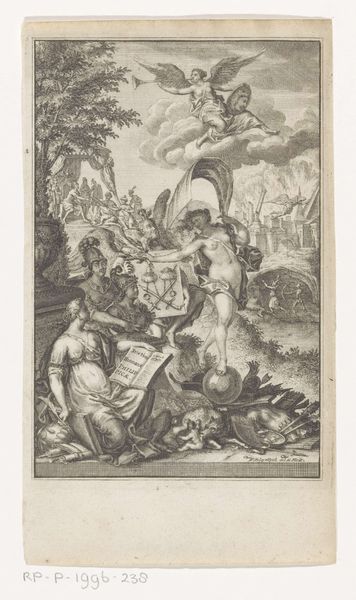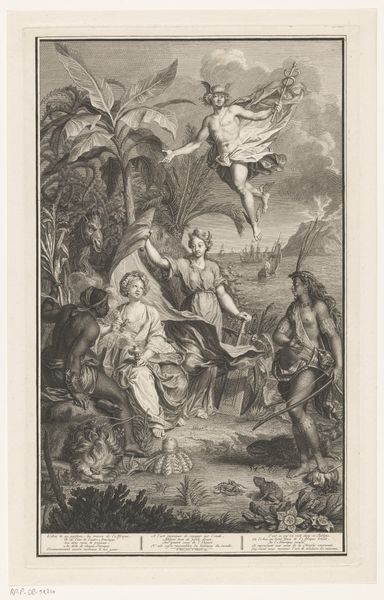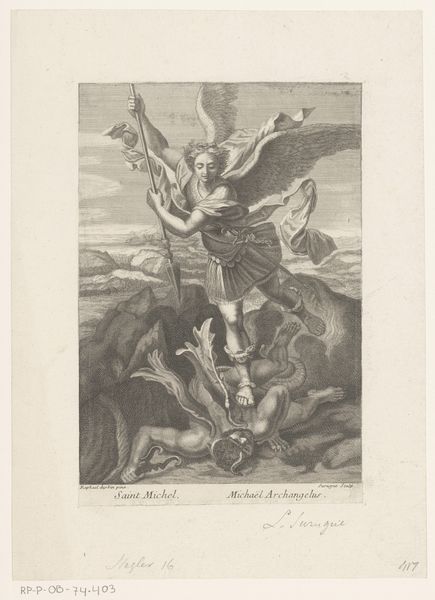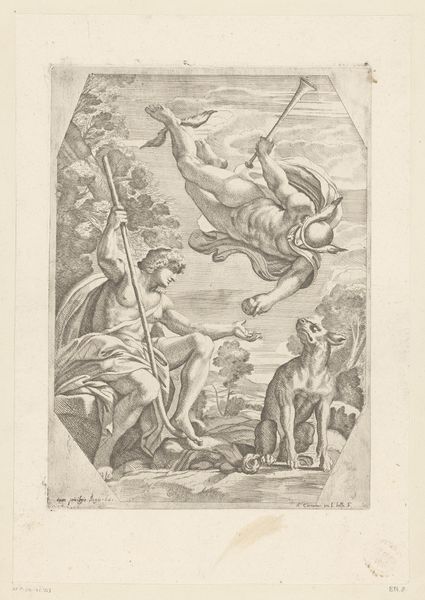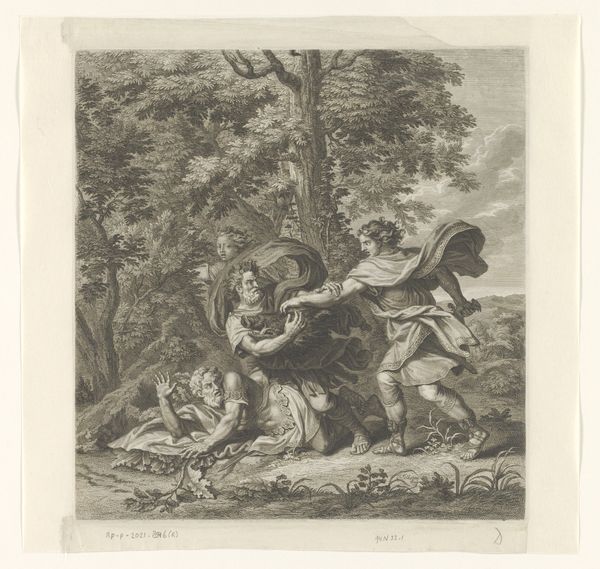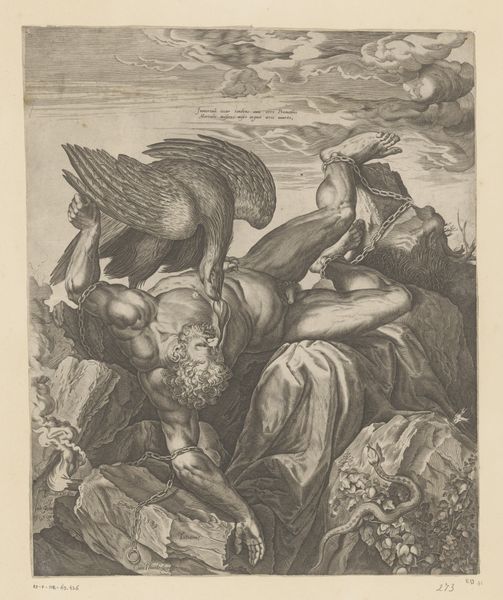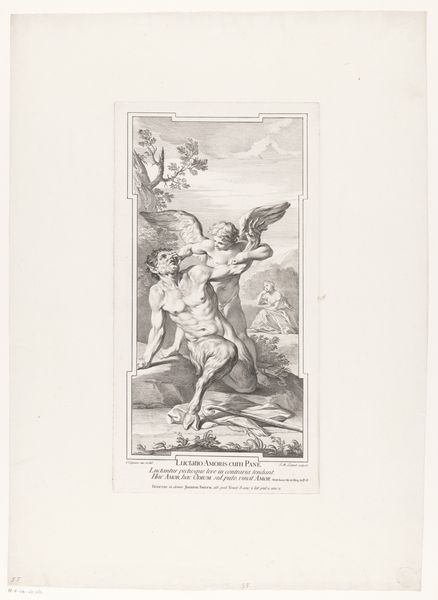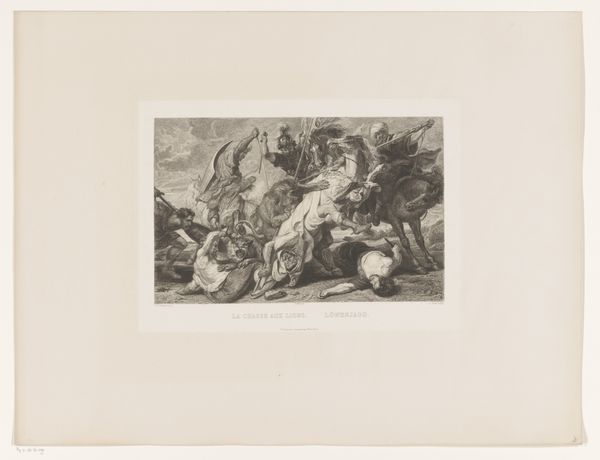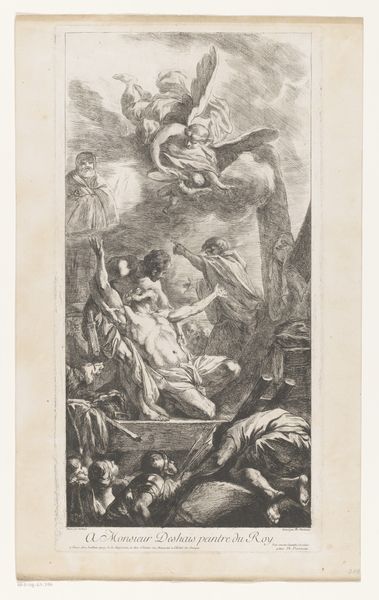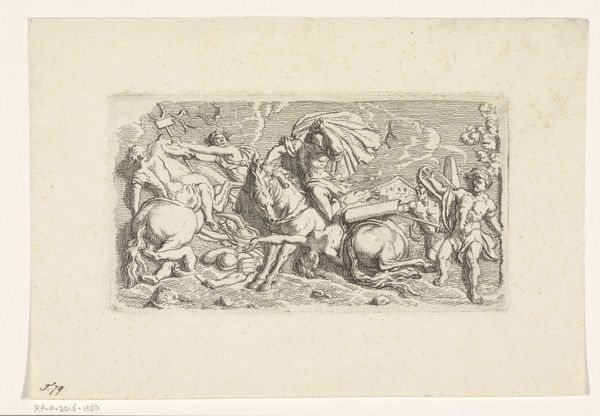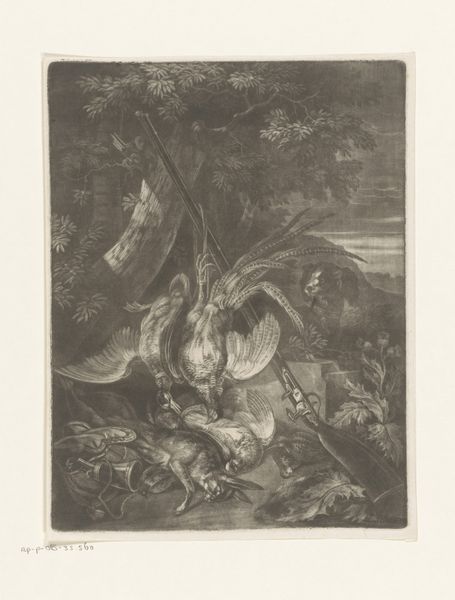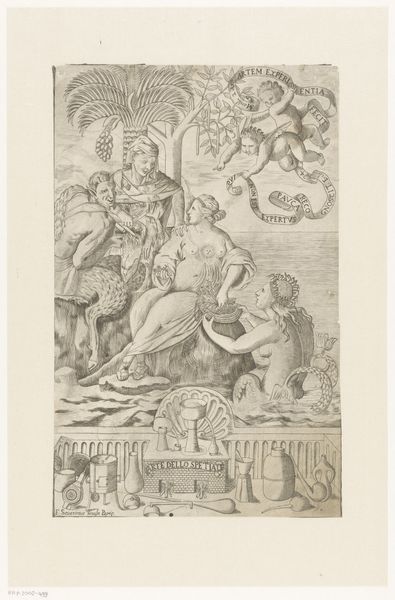
drawing, print
#
drawing
#
baroque
#
animal
# print
#
landscape
#
bird
Dimensions: height 168 mm, width 132 mm
Copyright: Rijks Museum: Open Domain
Curator: Looking at this intriguing 17th-century piece entitled "Reiger, eend, pauw, papegaai, ara en kip in een landschap", made sometime between 1680 and 1688 by Robert Robinson, the composition really strikes me. So much feathered life gathered in one spot! Editor: It's a bizarre collection, isn’t it? Quite an artificial grouping, especially given the monochrome print—a definite clash of social statuses. I wonder, was it meant to elevate or domesticate these creatures? Curator: Well, in that era, images like these served multiple functions. Prints, especially those featuring exotic animals, played a key role in disseminating knowledge and shaping perceptions about the wider world for European audiences. Consider the cultural impact on domestic life. Editor: Right, the access to affordable imagery for a growing middle class also had social implications. What sort of labor went into such detail at scale with reproductive media? Did it function as both art and craft? Curator: Good question. The act of creating these images—drawing, engraving, printing—was highly skilled and usually involved workshops, not individual artisans, which can be difficult to know when the only listed author is the leading figure. The standardization offered new models of labor organization, like mass produced ornamentation in living rooms! Editor: That makes sense. And what about the materials themselves? Do we know what inks and papers were typical? Because the subtle gradations here are striking, offering visual pleasures which might reinforce ideas of value. Curator: Early modern printmakers often employed linen-based papers known for their strength and longevity. Various tools like burins or etching needles created incredibly fine lines. I’m sure it wasn’t easy to create with the consistency it needed, because this image suggests so many colors! Editor: Perhaps the lack of actual colors and reliance on line is another strategy to distance these animals from their source context in the “natural” world, allowing them to signify even more about consumption. Fascinating how production so deeply influences the reception of imagery! Curator: Exactly, seeing the role it had in that early system allows me to appreciate its cultural reach and sophistication beyond aesthetics. It brings new perspectives into the study of art history! Editor: Indeed! Exploring its process gives such interesting context!
Comments
No comments
Be the first to comment and join the conversation on the ultimate creative platform.
